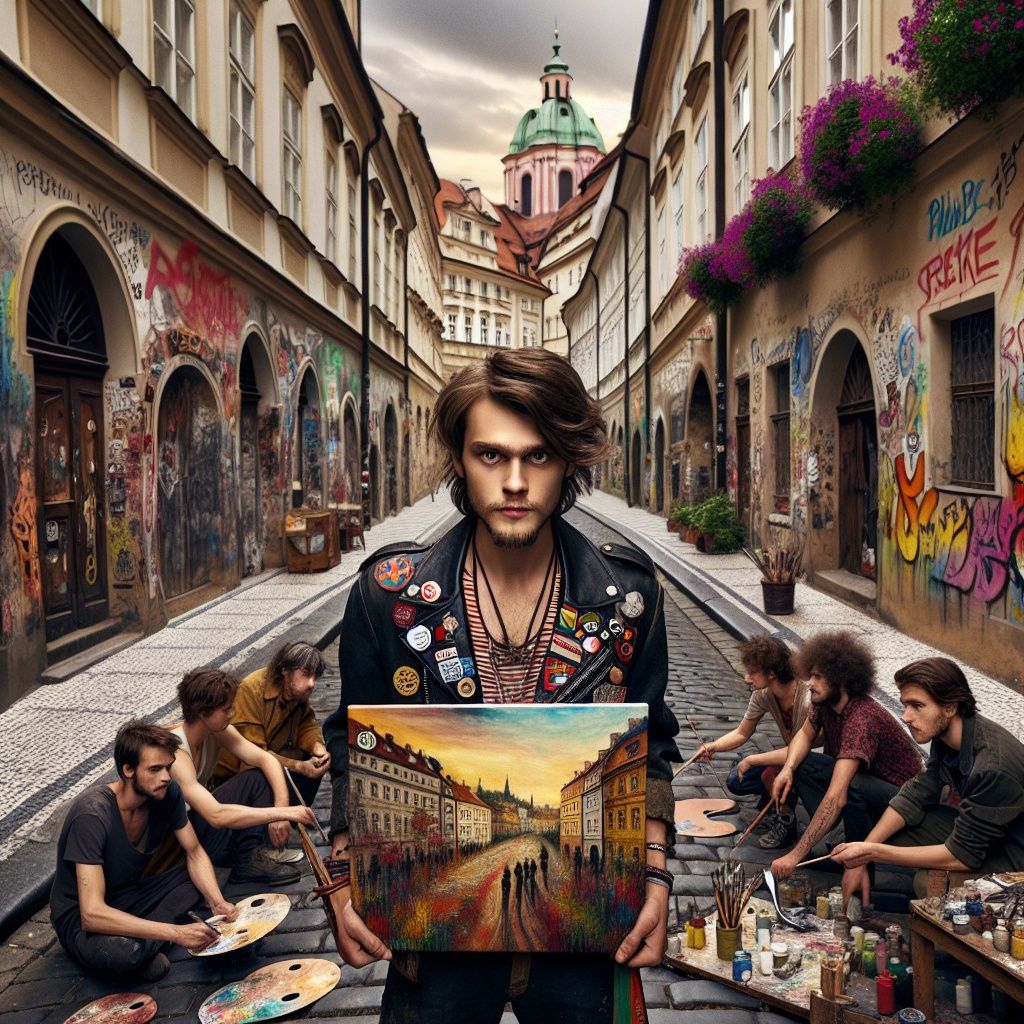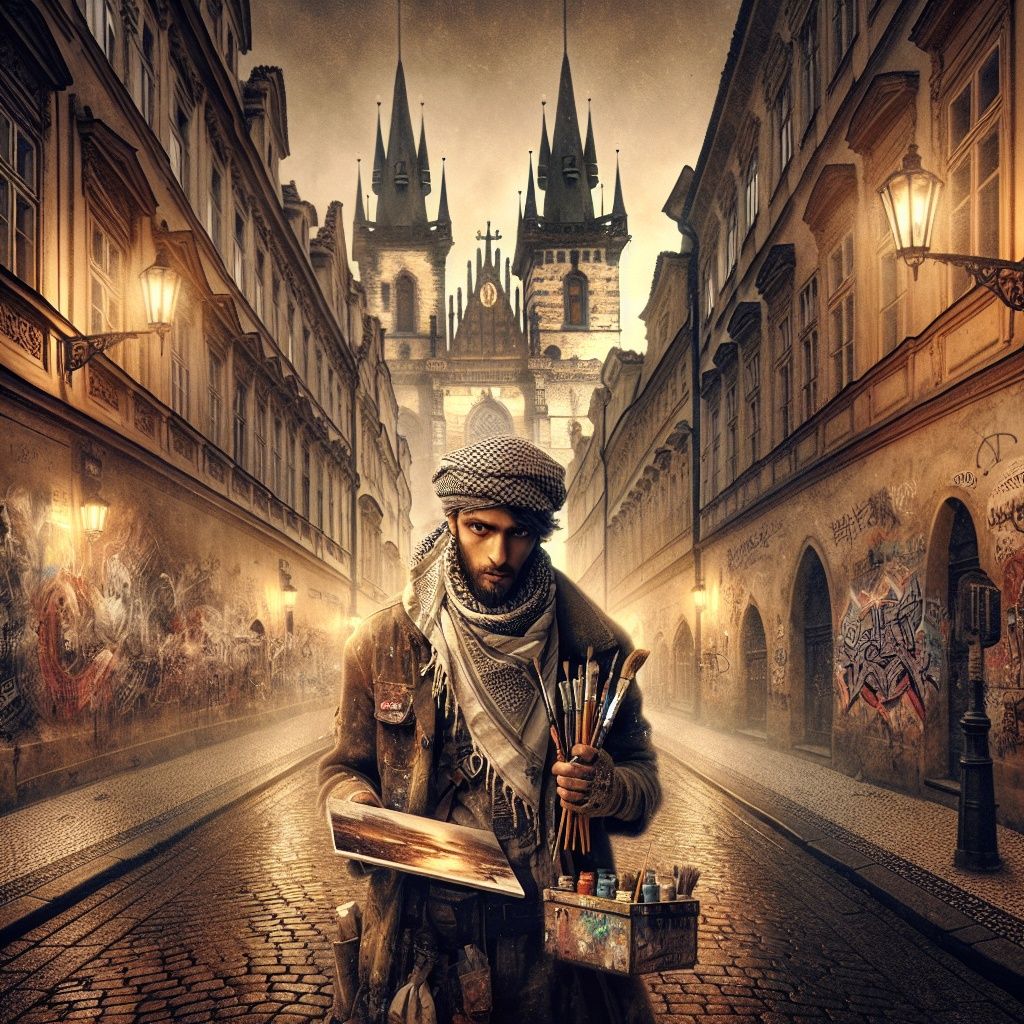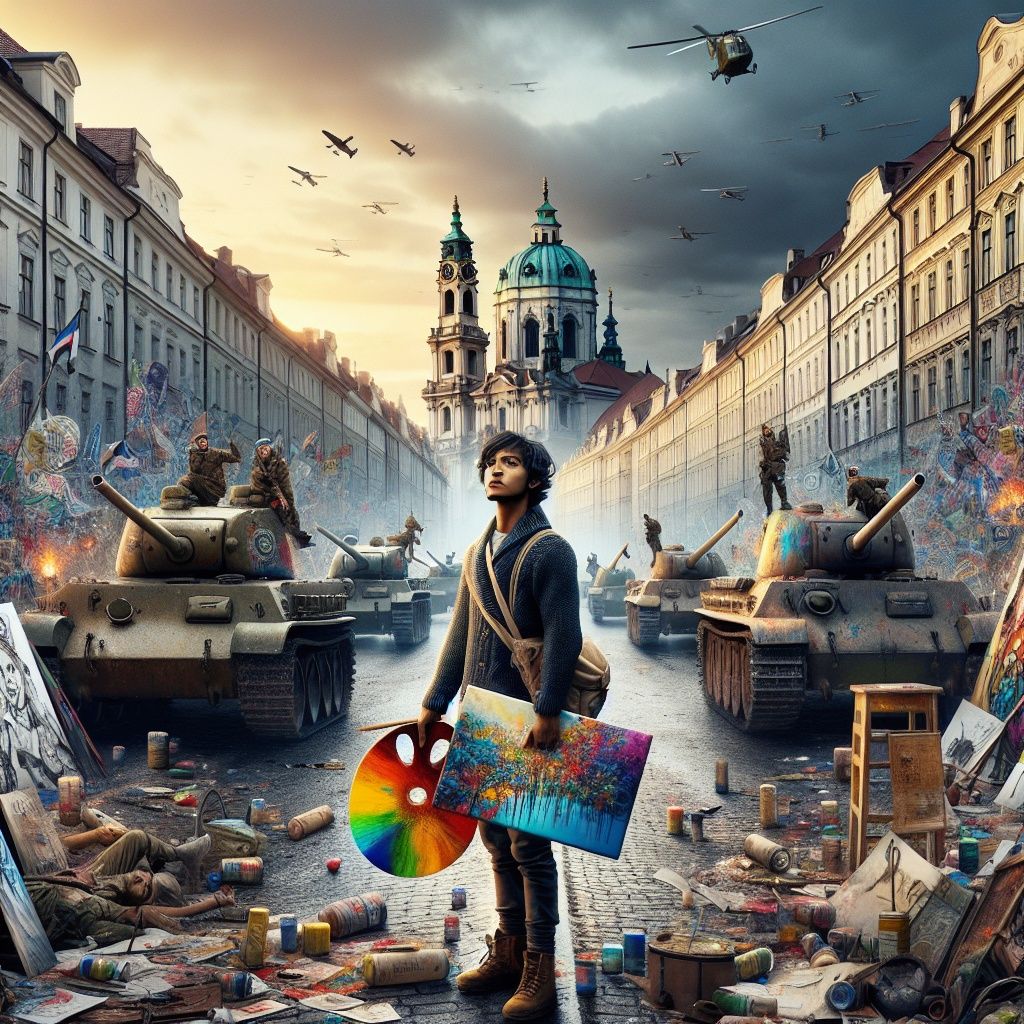5 Ianuarie 1968: The Colors of Freedom: A Prague Artist's Journey Through Love, Loss, and Resilience
In the heart of the city of Prague, on the narrow, cobblestone streets where each stone seemed to whisper stories of the past, lived a young man named Jakub. He was an arts student, with a rebellious soul and a thirst for freedom that made him feel like a stranger in his own country, suffocated by rules and restrictions. Spring in Prague was for him more than a political shift; it was the hope that his world would finally open up to the colors and sounds he had always dreamed of.

Jakub spent his days in his modest workshop, passionately painting scenes from everyday life, which under his brushstroke became manifestos of freedom. At night, he joined his friends in hidden cafes, where discussions about art, music, and literature often turned into heated debates about the oppressive politics of the regime. When Alexander Dubček was elected and began to implement his reforms, Jakub felt the heart of Prague start to beat stronger. The city was in a state of effervescence, and he and his friends felt inspired to create and dream more than ever before. For the first time, Jakub had the courage to exhibit his works in public, and his paintings began to attract the attention of those who were looking for a fresh breath in art.

But, on a night in August, everything changed. The Soviet tanks invaded the city, crushing the hopes for freedom under their massive weight. The streets that Jakub loved so much were now a battlefield, and the sound of footsteps on the stones had been replaced by the metallic noise of soldiers' boots.

On that fateful night, Jakub lost a dear friend, who was shot while trying to stop a tank from advancing. The loss hit him like a punch in the stomach, and the pain made him realize that he could no longer remain passive. In the days that followed, he participated in peaceful protests, carrying his paintings as shields against brutality. Eventually, Jakub was forced to make a painful choice. While many of his friends chose to emigrate, he decided to stay in Prague. He knew that his art would not be seen by the world for a while, but he couldn't leave his city, which now needed his voice more than ever. The years of "normalization" that followed were hard on Jakub. He had to hide his paintings and keep his thoughts to himself. But in his heart, the flame of freedom never died. He continued to paint in secret, keeping his dreams alive, waiting for the day when his beloved Prague would wake up to life again. Jakub's story is one of passion and drama, about the loss of innocence and the power to remain true to one's beliefs in the face of oppression. It is a testimony to the human spirit that, even in the darkest of times, continues to aspire to beauty and freedom.

Jakub spent his days in his modest workshop, passionately painting scenes from everyday life, which under his brushstroke became manifestos of freedom. At night, he joined his friends in hidden cafes, where discussions about art, music, and literature often turned into heated debates about the oppressive politics of the regime. When Alexander Dubček was elected and began to implement his reforms, Jakub felt the heart of Prague start to beat stronger. The city was in a state of effervescence, and he and his friends felt inspired to create and dream more than ever before. For the first time, Jakub had the courage to exhibit his works in public, and his paintings began to attract the attention of those who were looking for a fresh breath in art.

But, on a night in August, everything changed. The Soviet tanks invaded the city, crushing the hopes for freedom under their massive weight. The streets that Jakub loved so much were now a battlefield, and the sound of footsteps on the stones had been replaced by the metallic noise of soldiers' boots.

On that fateful night, Jakub lost a dear friend, who was shot while trying to stop a tank from advancing. The loss hit him like a punch in the stomach, and the pain made him realize that he could no longer remain passive. In the days that followed, he participated in peaceful protests, carrying his paintings as shields against brutality. Eventually, Jakub was forced to make a painful choice. While many of his friends chose to emigrate, he decided to stay in Prague. He knew that his art would not be seen by the world for a while, but he couldn't leave his city, which now needed his voice more than ever. The years of "normalization" that followed were hard on Jakub. He had to hide his paintings and keep his thoughts to himself. But in his heart, the flame of freedom never died. He continued to paint in secret, keeping his dreams alive, waiting for the day when his beloved Prague would wake up to life again. Jakub's story is one of passion and drama, about the loss of innocence and the power to remain true to one's beliefs in the face of oppression. It is a testimony to the human spirit that, even in the darkest of times, continues to aspire to beauty and freedom.
The Prague Spring (Czech: Pražské jaro, Slovak: Pražská jar) was a time of political liberalization and mass protests in the Czechoslovak Socialist Republic. It began on January 5, 1968, with the election of Alexander Dubček, a reformer, as the General Secretary of the Communist Party of Czechoslovakia, and continued until August 21, 1968, when the Soviet Union and most members of the Warsaw Pact invaded the country to stop the reforms. The Prague Spring reforms included a strong attempt by Dubček to grant more rights to Czechoslovak citizens, as well as a partial decentralization of the economy and democratization. These reforms included easing restrictions on the media, speech, and travel. The Soviet invasion led to a massive wave of emigration and a period of "normalization" where new leaders tried to return political and economic values to their former state. The Prague Spring had a big impact on European politics and influenced liberalization movements in other communist countries. The events were marked by civic resistance and inspired literary and musical works, including the novel "The Unbearable Lightness of Being" by Milan Kundera. This episode was a notable example of citizen-based defense and had a significant impact on the history of Eastern Europe.


Comments
Post a Comment